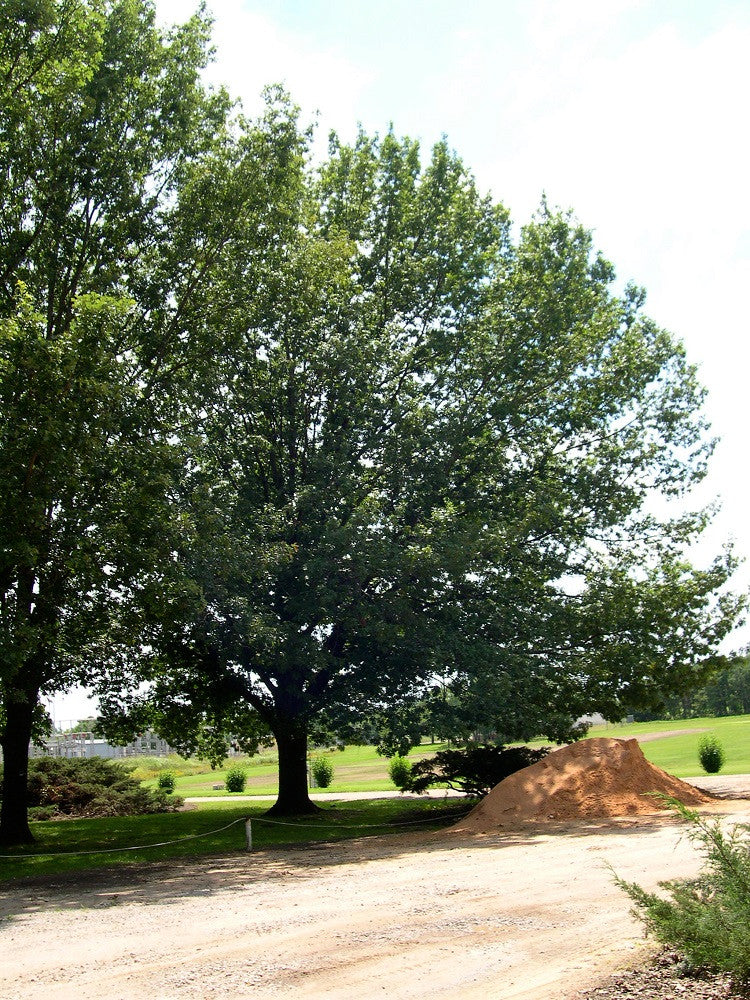Bareroot Plant Material
Shumard Oak
Shumard Oak
Couldn't load pickup availability
25 plants per unit
Quercus shumardii, or Shumard Oak, is native to eastern Kansas and is a member of the red oak family. It grows naturally along river bottom land and rocky hillsides next creeks and streams. However, it seems to tolerate fair to poor soils very well and has become popular in urban settings. It is more tolerant of clay soils than northern red oak and has proven its adaptability throughout Kansas. In its native environment it is a rapid grower and will reach heaths of 60-80 feet or more with a spread of around 50 feet. It is very similar in appearance to northern red oak. Whereas northern red oak is very “picky” as to where it grows, Shumard oak is much more tolerant of marginal sites and should be used if it is uncertain if northern red oak will tolerate the site or not.
Leaves, Stems and Fruit
Leaves are simple, alternate, 4 to 8 inches long, and 3 to 6 inches wide. Very similar to northern red oak in appearance. The bark is reddish-tan when young and turns more grey as it ages. The acorns are somewhat round and are about 1 inch long and ½ to 1 inch wide. It is very similar in appearance to northern red oak. Acorns take two years to mature and the tree starts producing acorns at an approximate age of 25 years old.
Use
Windbreaks - Shumard oak is a long-lived, strong tree that is a moderate to fast grower. It tolerates a wide variety of soil types.
Wildlife Habitat - Excellent wildlife tree. Long lived. Acorns eaten by squirrels, deer, turkey, and other wildlife.
Adaptation and Soil
Shumard oak is a very adaptive tree species. Even though its native habitat is in eastern Kansas along river bottom ground and along creeks, it is very adaptive to clay soils and high pH levels. It is becoming more popular in urban plantings where soil compaction may be a problem and has been proving itself in western Kansas where pH levels are high. If considering using northern red oak but soil conditions are marginal, then strongly consider Shumard oak.
Spacing
In windbreaks, space plants about 20 feet apart.
Culture
One-year-old, bare-root seedlings 18 to 24 inches tall are used in plantings. Survival generally is very good. Although somewhat tolerant of weed and grass competition, they will develop faster with good weed and grass control.
Pests
Few disease and insect problems. Rabbits and deer may be a problem as is common with any hardwood species.





